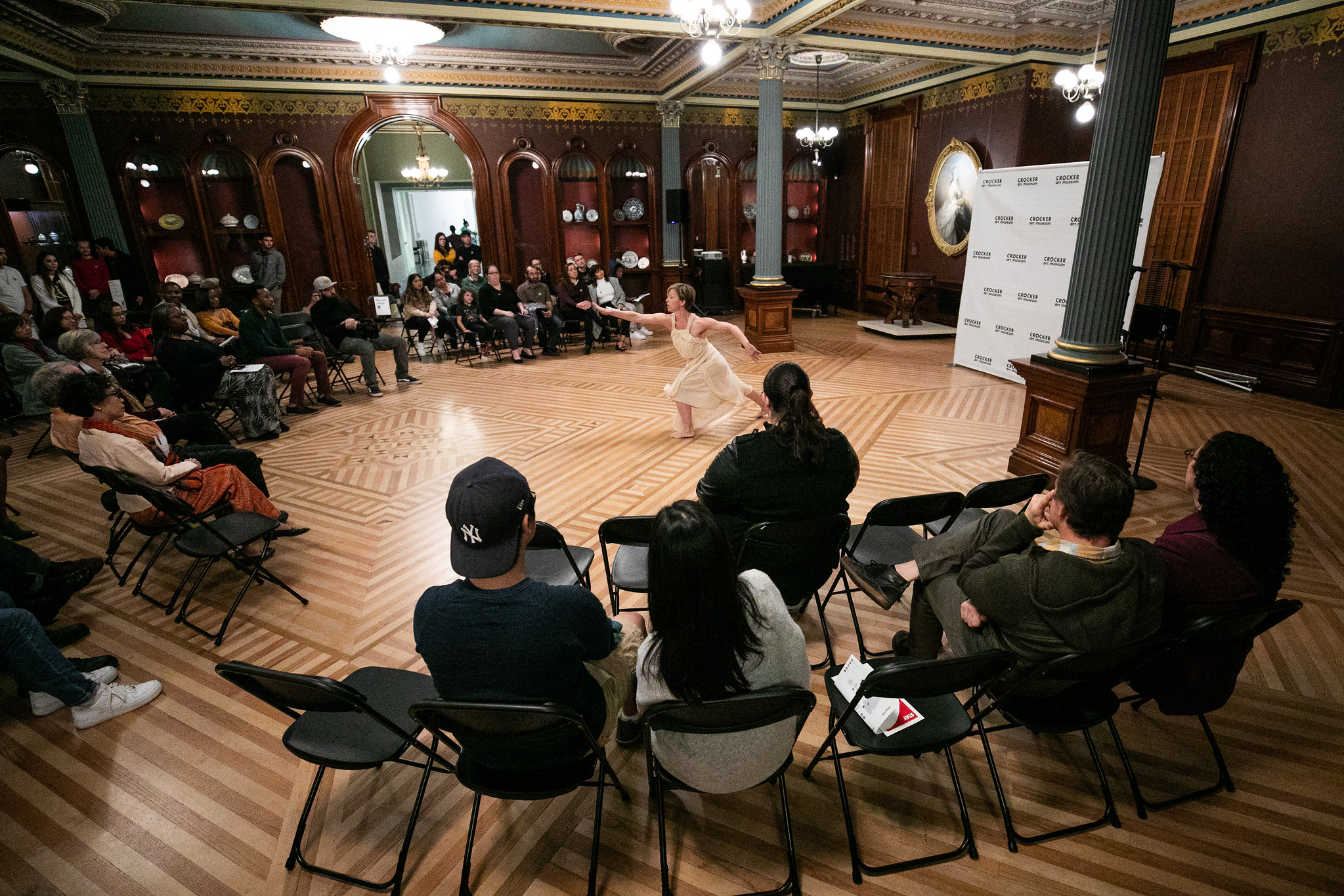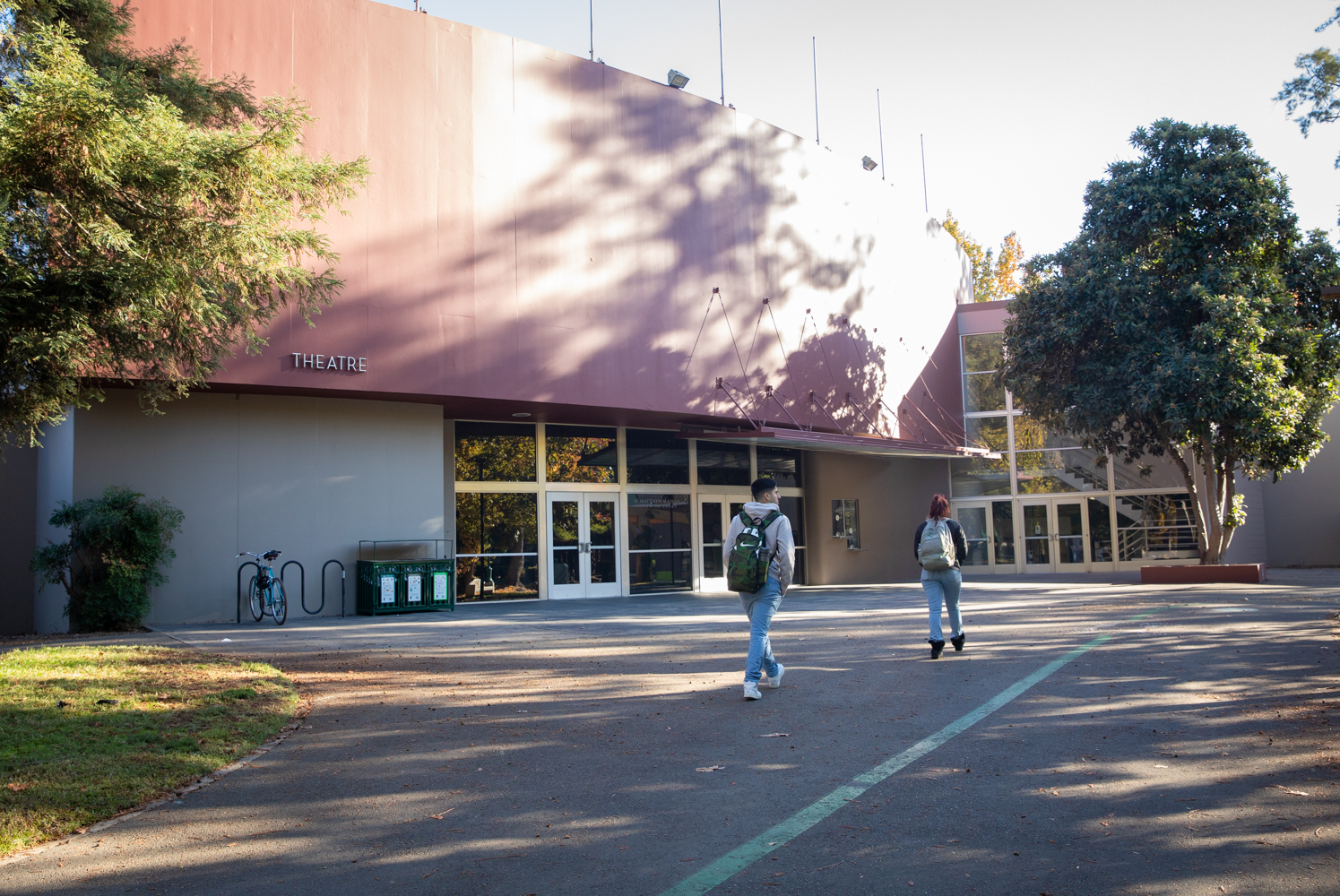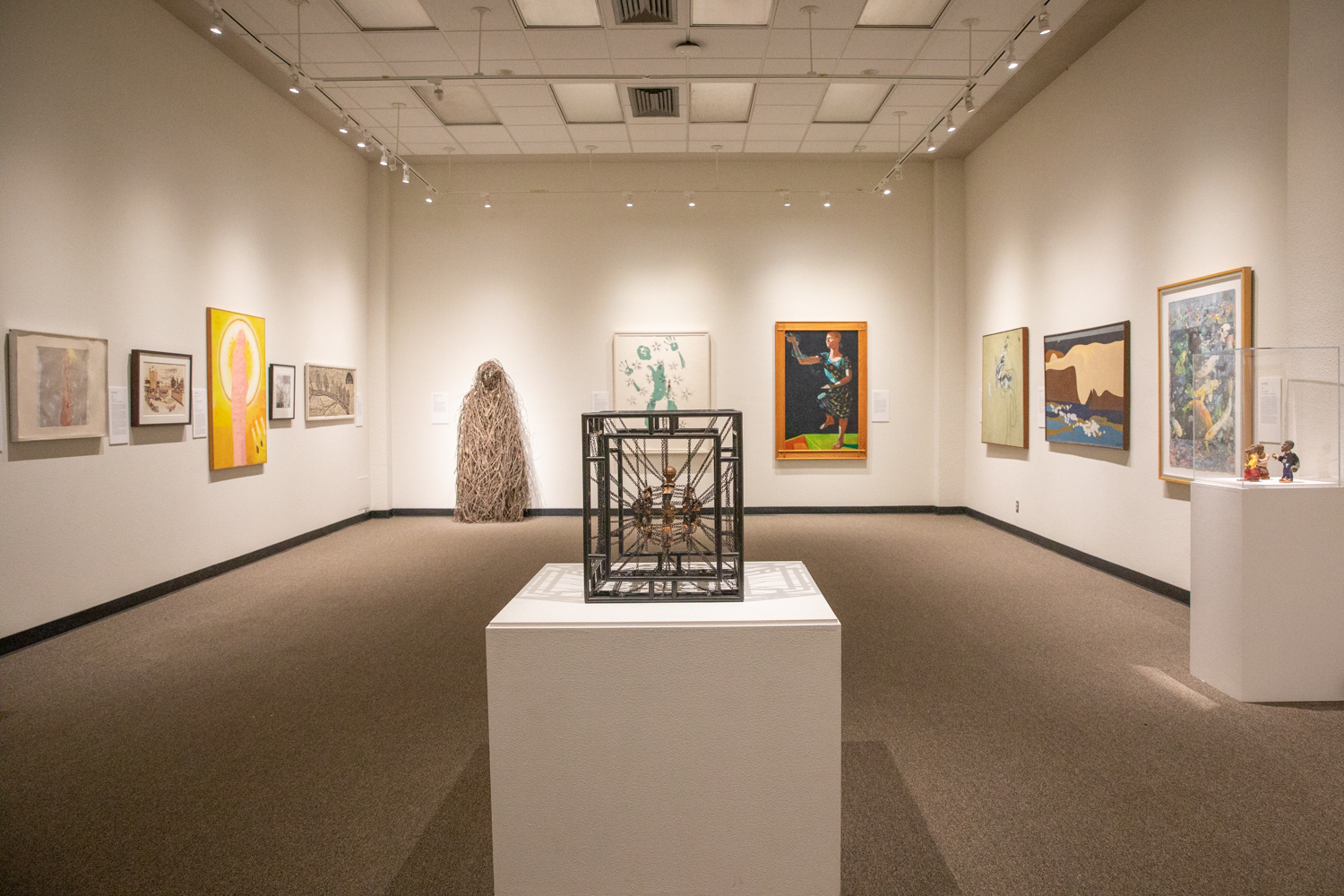Story Content
Art History students create audio guides for Crocker museum
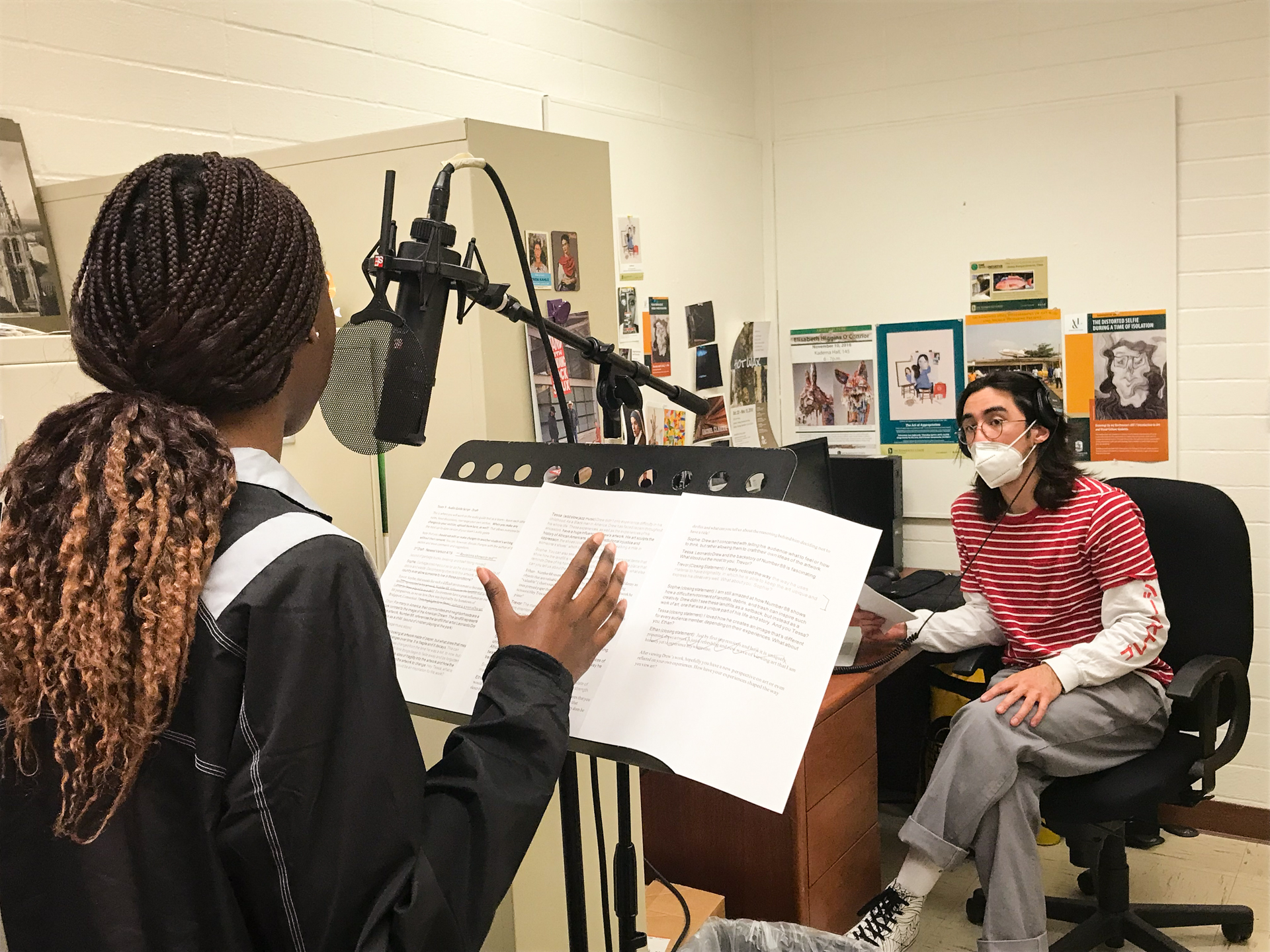
December 07, 2022
Sarah Rodriguez was hiking through the El Dorado National Forest near Kyburz, looking for Sugar Loaf Peak. It wasn’t easy to find. There’s no established trail. She had to walk through several residential properties.
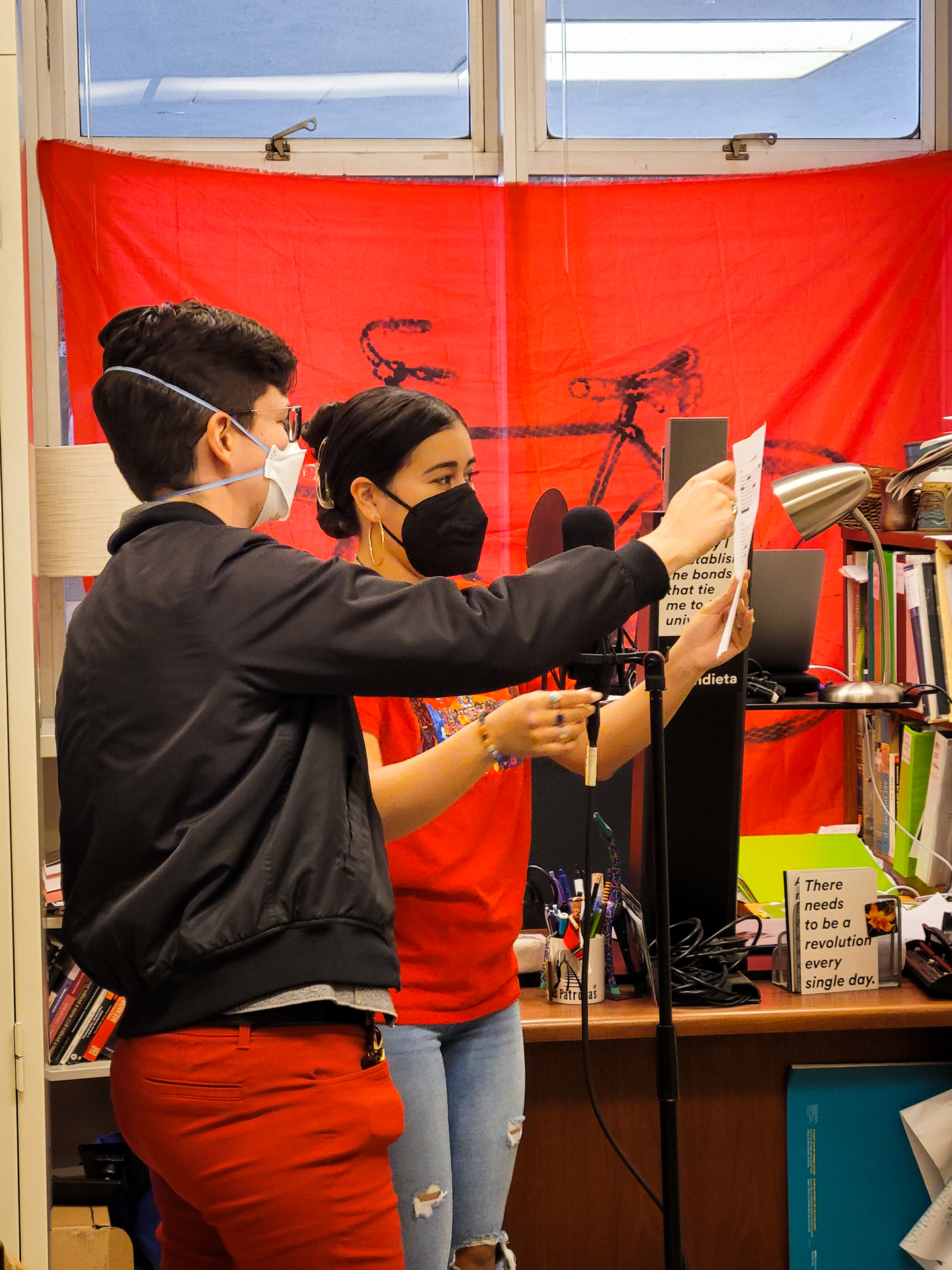
Plus, she added, “the peak itself isn’t called ‘Sugar Loaf Peak.’ ”
Rodriguez wasn’t on a weekend hike for fun. She’s not an Environmental Studies or Biology major. She’s an Art Studio major, and she was working on art history project.
The peak is the subject of a Thomas Hill painting hanging in the Crocker Art Museum, for which Rodriguez and her classmates were creating an audio guide. As part of their research, she had volunteered to visit the peak herself.
“I love the outdoors, I love hiking,” she said. “When we found the location was only an hour away, I had to go.”
Rodriguez, her group project members, and 118 other Sacramento State Art History students have created 22 audio guides for the Crocker over the last three years as part of the U.S. and Caribbean Art class taught by Assistant Professor of Art Mya Dosch.
Eight of the guides debuted last month during U-Nite, with the others to follow next year.
The project has given Dosch’s students experience developing and recording materials for public use, experience that will be valuable as professional artists or art historians.
“They're learning research skills, but they're not just doing a paper that will only be read by me,” Dosch said. “They're actually meeting with Crocker curators, Crocker education department staff, and so they really feel like they’re doing professional work and learning how to be a consultant on a project like this.”
At the same time, the Crocker is also getting something important: voices and perspectives of Sac State’s diverse and relatively young student body.
“These guides truly represent the ethos of the project and the collaboration,” said Houghton Kinsman, the museum’s adult education coordinator. “They are student-led, prioritizing student voices and the diversity of perspectives, and shed light on BIPOC work in the Crocker collection that deserves more attention.”
One of the museum’s goals, he said, is to position itself as a place that is “the site for joy as well as the tough conversation, and the audio guides reflect this.”
“Students ask the listeners to consider some difficult questions in relation to what is on display in front of them, but at the same time take them on an intellectually stimulating adventure,” he said.
Visiting the Crocker was among Dosch’s last in-person class activities in spring 2020, before the pandemic. The audio guides project, she said, kept the students engaged despite remote learning because they knew they were producing something tangible.
She repeated the project the following two years, with groups of four to five students each working on one audio guide. Alejandro Lara-Agraz, a music student with audio production experience, eventually came in to help finish them.
“It helps students realize their voice matters.” -- Mya Dosch, assistant professor of Art
Students brought their own unique perspectives, histories, and approaches to the project, Dosch said. One student connected the work of textile artist Marie Watt to her own family’s textile traditions. One actually reached out directly to the artist to ask questions.
"It's supposed to allow the students to, yes, learn research skills, but also bring in their own personalities and their own take on an artwork,” Dosch said.
That’s how hiking enthusiast Rodriguez found herself on the trail to “Sugar Loaf Peak” – or rather, the peak within the Sugar Loaf recreation area that Thomas Hill depicted and so named in his painting.
The name wasn’t the only inconsistency. Looking at the landscape, she realized that Hill had exaggerated some elements or incorporated features from places surrounding the Sugar Loaf area.
“The waterfall in the background?” she explains in the audio guide. “Erase it. It doesn’t exist there.”
The site’s terrain also is far too steep for people to live or camp on, as depicted in Hill’s artwork. Further, identities of people in the painting – Native Americans? European colonizers? – are left unclear and therefore up to the viewer’s interpretation.
For Rodriguez, whose own emphasis is painting, learning these things was a bit of a relief.
“You can make little lies in your paintings,” she said. “It makes me less afraid of (having to make) things so representational or exact.”
During the project, Dosch has witnessed how meaningful and confidence boosting it was to the students to see their work validated and used by an important cultural institution such as the Crocker Art Museum. She said that helps connect them more closely to the museum itself.
“It helps students realize their voice matters,” Dosch said. “Our students can feel intimidated or that the museum is not for them. This really shifts that.”
To listen to the audio guides, visit the Crocker Art Museum’s podcast webpage.
Media Resources
Faculty/Staff Resources
Looking for a Faculty Expert?
Contact University Communications
(916) 217-8366
communications@csus.edu
